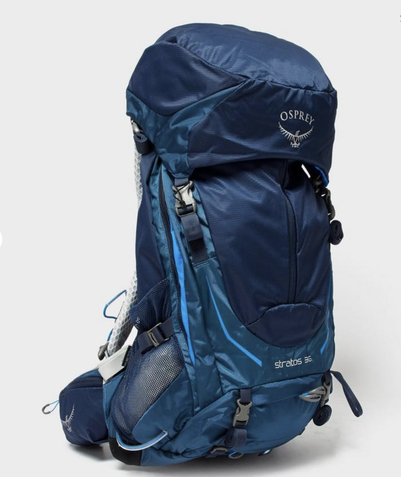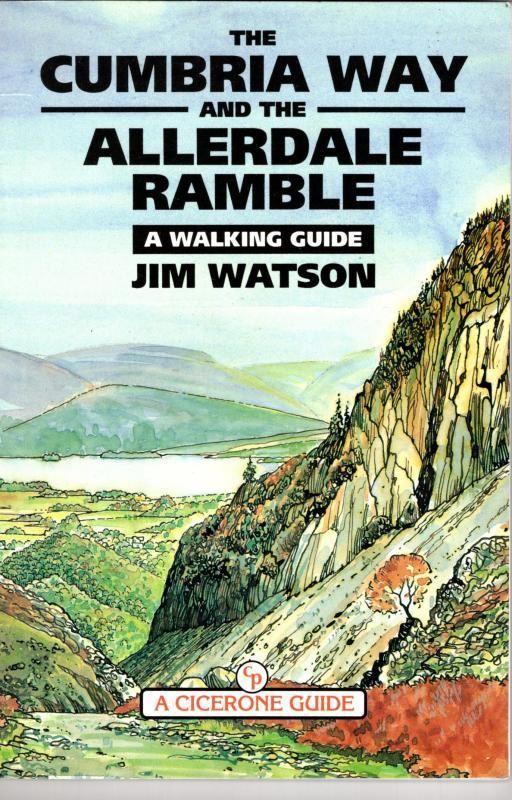The Cumbria Way 2021 Itinerary, Planning & Preparation
Itinerary
Planning the itinerary for this walk was fairly easy compared to other long distance paths we have completed. The 73 miles can be split into good bitesize chunks and we opted to complete the walk in 5 days although the majority of people normally opt to take a day longer.
Planning the itinerary for this walk was fairly easy compared to other long distance paths we have completed. The 73 miles can be split into good bitesize chunks and we opted to complete the walk in 5 days although the majority of people normally opt to take a day longer.
Planning & Preparation
The following notes are pretty generic to most long distance walking therefore are similar in text to other walks we have undertaken and have simply been altered as and when for each different walk.
Luckily we live in the Lake District therefore the planning for this walk was not overly onerous. We did the walk in two distinct stages with the two legs near home (Days 4 & 5) completed first. For the first of these days we drove one car to Caldbeck and then returned in our second car to Keswick, duly walking back to Caldbeck and returning back to Keswick in the first car. For the 5th day we did exactly the same routine - leaving one car in Carlisle and driving the other car back to Caldbeck.
For the 3 days walking between Ulverston & Keswick we based ourselves in the excellent Britannia Inn in Elterwater. We parked one car in Keswick and left it there for 3 days and drove our other car to Coniston. After parking up we caught the bus to Ulverston and simply walked back. From Coniston we travelled over to Elterwater for the first of 2 nights at The Britannia Inn. The following day we caught a taxi to Coniston and walked back to Elterwater and on the third day walked the long leg to Keswick, collected our car and then drove back to Coniston to pick up the other car. Simple!
Our itinerary therefore was as follows:
Luckily we live in the Lake District therefore the planning for this walk was not overly onerous. We did the walk in two distinct stages with the two legs near home (Days 4 & 5) completed first. For the first of these days we drove one car to Caldbeck and then returned in our second car to Keswick, duly walking back to Caldbeck and returning back to Keswick in the first car. For the 5th day we did exactly the same routine - leaving one car in Carlisle and driving the other car back to Caldbeck.
For the 3 days walking between Ulverston & Keswick we based ourselves in the excellent Britannia Inn in Elterwater. We parked one car in Keswick and left it there for 3 days and drove our other car to Coniston. After parking up we caught the bus to Ulverston and simply walked back. From Coniston we travelled over to Elterwater for the first of 2 nights at The Britannia Inn. The following day we caught a taxi to Coniston and walked back to Elterwater and on the third day walked the long leg to Keswick, collected our car and then drove back to Coniston to pick up the other car. Simple!
Our itinerary therefore was as follows:
Total Mileage - 77 miles
Accommodation
See "Research" below.
Fitness
Anyone undertaking a long distance walk should not underestimate how hard it really is. To prepare it is recommended that in the preceding months you get used to walking with weight on your shoulders (particularly if wild camping or you are not using baggage transfer) and for a significant distance. We also made sure we did plenty of cardio vascular exercise in the lead up to the walk. Additionally, it does help to stretch out the hamstring, calf, groin and quads before, during and after each days walking.
Feet
The most important aspect of any long distance walk is how you look after your feet. We have a regime for any walk we do and that is on a daily basis tape up any areas of your feet which have suffered blisters/rubbing in the past. Use a micro porous tape to protect each area. Additionally, once taped up, smear vaseline around the sole of the feet and in between the toes - it really does make a difference. During the walk it is important to air your feet and let them breathe out of the boots - you may also wish to change your socks, particularly on the longer days. On the days we did this then we applied a soothing foot spray also. In the evening and after a bath/shower you can also apply some Peppermint Foot Lotion which will soothe aching feet.
Kit
See "Research" below.
Fitness
Anyone undertaking a long distance walk should not underestimate how hard it really is. To prepare it is recommended that in the preceding months you get used to walking with weight on your shoulders (particularly if wild camping or you are not using baggage transfer) and for a significant distance. We also made sure we did plenty of cardio vascular exercise in the lead up to the walk. Additionally, it does help to stretch out the hamstring, calf, groin and quads before, during and after each days walking.
Feet
The most important aspect of any long distance walk is how you look after your feet. We have a regime for any walk we do and that is on a daily basis tape up any areas of your feet which have suffered blisters/rubbing in the past. Use a micro porous tape to protect each area. Additionally, once taped up, smear vaseline around the sole of the feet and in between the toes - it really does make a difference. During the walk it is important to air your feet and let them breathe out of the boots - you may also wish to change your socks, particularly on the longer days. On the days we did this then we applied a soothing foot spray also. In the evening and after a bath/shower you can also apply some Peppermint Foot Lotion which will soothe aching feet.
Kit
Rucksacks
We utilised our Osprey 36L Rucksacks - an excellent piece of kit which we use for everyday hiking. Plenty of room in the main compartment with a separate area for foul weather/dirty kit and zipped pockets on the waist strap. The rucksack is also fitted with a rain hood. We have used Osprey Rucksacks for many years now and they are certainly built to last.
We utilised our Osprey 36L Rucksacks - an excellent piece of kit which we use for everyday hiking. Plenty of room in the main compartment with a separate area for foul weather/dirty kit and zipped pockets on the waist strap. The rucksack is also fitted with a rain hood. We have used Osprey Rucksacks for many years now and they are certainly built to last.
|
Osprey Stratos 36 (Mens)
|
Osprey Sirrus 36 (Womens)
|
Boots
We both use 3 season Scarpa Leather boots and there is no doubt that whilst they may be slightly heavier, what they lose in weight they more than make up for in comfort and reliability. We had these well worn in before we commenced the walk. Depending upon space in your rucksack, you may wish to consider taking a pair of trail shoes for the flatter sections of the route. I can heartily recommend the Inov8 X-Talon Ultra 260 which I used for the first time on sections of the Coast to Coast in 2020.
We both use 3 season Scarpa Leather boots and there is no doubt that whilst they may be slightly heavier, what they lose in weight they more than make up for in comfort and reliability. We had these well worn in before we commenced the walk. Depending upon space in your rucksack, you may wish to consider taking a pair of trail shoes for the flatter sections of the route. I can heartily recommend the Inov8 X-Talon Ultra 260 which I used for the first time on sections of the Coast to Coast in 2020.
|
Scarpa Terra GTX
|
Scarpa Delta GTX
|
Inov8 X-Talon Ultra 260
Daily Wear
We both wore light walking trousers and a cool max t-shirt although when the wind did blow and on the occasions we had a bit of light rain then we wore our featherlite pull on jackets. The one below is the Montane version - we had the Rab (Dave) and a Paramo (Angie) version. The jacket rolls up to nothing and weighs virtually the same. A fantastic piece of kit.
We both wore light walking trousers and a cool max t-shirt although when the wind did blow and on the occasions we had a bit of light rain then we wore our featherlite pull on jackets. The one below is the Montane version - we had the Rab (Dave) and a Paramo (Angie) version. The jacket rolls up to nothing and weighs virtually the same. A fantastic piece of kit.
Mapping
We utilised a combination of 3 methods of navigation during this walk. Firstly the relevant OS Maps & our compass and secondly we used our own pre planned routes downloaded to our trusty Satmap Active 20 GPS and thirdly the well appointed Cumbria Way waymarks. Additionally, we had OS Locate installed on our phones and carried a back up power pack for both our phones and the GPS. We had no navigational mishaps and the signs are plentiful - just remember to add common sense into your navigation, know how to use a map & compass and ensure you have a back up power supply. Common sense is not rocket science!
We utilised a combination of 3 methods of navigation during this walk. Firstly the relevant OS Maps & our compass and secondly we used our own pre planned routes downloaded to our trusty Satmap Active 20 GPS and thirdly the well appointed Cumbria Way waymarks. Additionally, we had OS Locate installed on our phones and carried a back up power pack for both our phones and the GPS. We had no navigational mishaps and the signs are plentiful - just remember to add common sense into your navigation, know how to use a map & compass and ensure you have a back up power supply. Common sense is not rocket science!
Research
There is a plethora of guidance and information out there. We knew the majority of the route anyway having walked a fair bit of it already however, in addition to other peoples blogs we utilised Jim Watson's Cumbria Way Guide Book and also referred to Dik Stoddart's excellent website. If you are thinking of attempting The Cumbria Way then Dik's website is a fantastic resource for not just the walk but accommodation ideas also. The link to Dik's website is here and a picture of Jim Watson's book is below.
With the planning all done we were ready to take on the Cumbria Way - read on to see how we got on.








